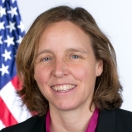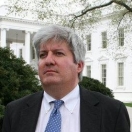
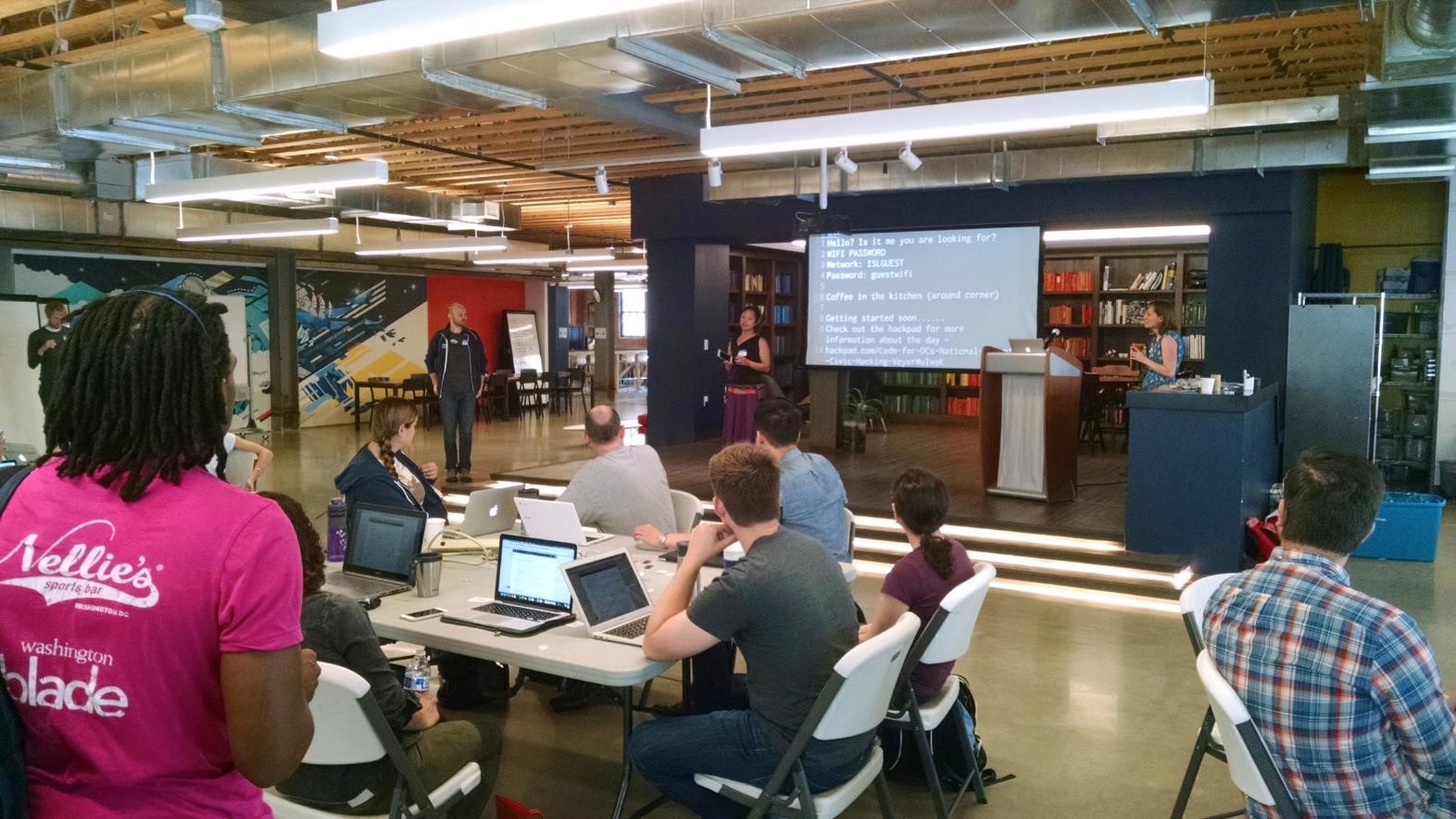
Our country is full of committed, creative, passionate people who collaboratively solved challenges in their communities – often working together in un-expected and creative partnerships, and often with limited resources. Partial or full solutions to tough problems are out there and discoverable. This post shares some great work already in progress together with methods used to scout and fast-track local innovation — by engaging private, public and other partners for an “all-hands-on-deck” approach to get everyone involved.
Solutions shared below include a range of initiatives and strategies that are already working to address challenges that fellow Americans are adapting in their local communities.
We hope you will share these solutions, use the Internet, bring teams together, and adapt them to your local context. Seed, grow, and adapt them to fuel positive change, economic growth, and mobility for all. Help accelerate access to solutions for everyone, in every community.
Megan Smith is the U.S. Chief Technology Officer.
Thomas Kalil is the Deputy Director for Technology and Innovation for the White House Office of Science and Technology Policy.
Aden van Noppen is a Senior Policy Advisor in the White House of Science and Technology Policy.
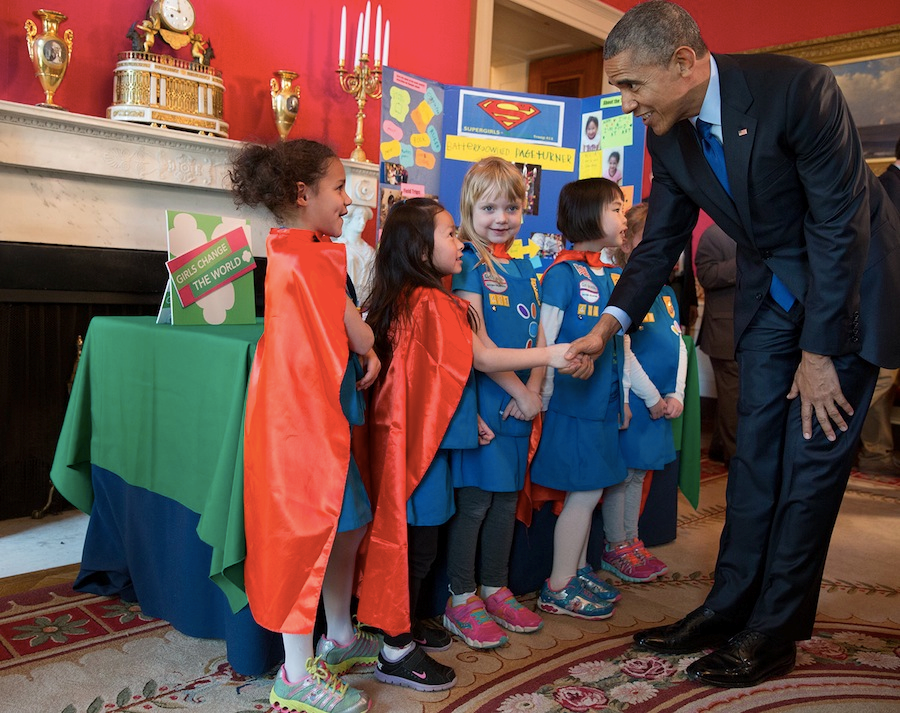
TRY THIS AT HOME
January 2017 | Download "Try This At Home" as a PDF
Over the past several years, the federal government has been working collaboratively with local communities across the country on a wide range of initiatives that support local innovation, opportunity creation, and collaborative solution-making. The following is a list of many of these initiatives. Some are efforts catalyzed locally and accelerated by the federal government that individuals, neighborhoods, or local leaders can participate in—and many have existing communities of practice that are open for new members to join. The list also includes a number of innovative approaches that can be taken and tested directly within your organization or community.
The solutions shared below are organized into the following domains:
- Strengthening Communities through Open Data, Open Government, & Community Engagement,
- Adding “TQ”, Open Innovation, and other Collaboration Approaches
- Increasing Access to STEM Education & Jobs
- Empowering All Americans to Join the STEM Workforce – Field the Whole Team
- Accelerating Entrepreneurship & Innovation Everywhere, for Everyone; and
- Building Smarter and More Equitable Cities and Region, including Accelerating Connectivity and Digital Access
We encourage you to explore these areas, determine which initiatives might make sense for your community, and then to build on these ideas and keep sharing what’s working.
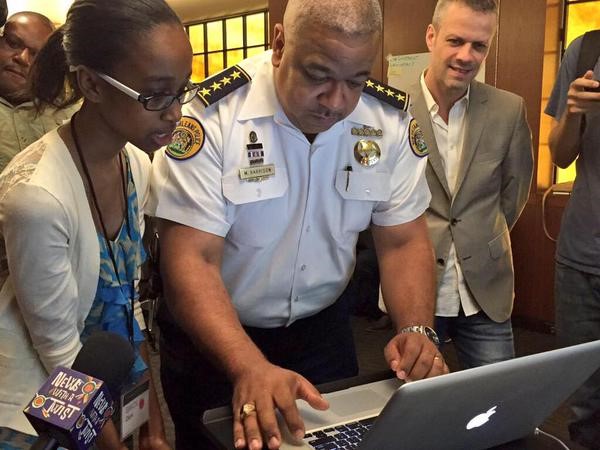
Strengthening Communities through Open Data, Engagement, & Open Government
-
Police Data Initiative (PDI): Launched in May 2015, this initiative supports law enforcement efforts to better use data and technology to increase transparency and accountability and to build trust with the citizens they serve and protect. Over 130 law-enforcement agencies – covering more than 44 million people across the country -- have collectively released more than 175 datasets on policing, such as: Use of Force, Officer-Involved Shootings, and Citizen Complaints; many have held community engagement events. The PDI community holds regular innovation exchange calls/virtual meetings for peer-to-peer learning as a community of practice. For more information:
- Police Data Initiative Call to Action: https://obamawhitehouse.archives.gov/policedata
- Fact Sheet on Police Data Initiative: https://obamawhitehouse.archives.gov/the-press-office/2015/05/18/fact-sheet-creating-opportunity-all-through-stronger-safer-communities
- Recent update on local law enforcement agency participation: https://www.justice.gov/opa/blog/growing-number-communities-are-using-data-improve-policing-and-criminal-justice
-
Data-Driven Justice Initiative (DDJ): To break the cycle of incarceration, the Administration launched the Data-Driven Justice Initiative in June 2016. Since then a bipartisan coalition of 140 city, county, and state governments-- covering almost 100 million people -- have committed to using data-driven strategies to identify and divert people with mental illness away from the criminal justice system and into effective, community based treatment. DDJ communities also commit to change their approach to pre-trial incarceration, so that low-risk offenders no longer stay in jail simply because they cannot afford a bond. These innovative strategies, which have measurably reduced jail populations in multiple communities, help stabilize individuals and families, better serve communities, and often save money in the process. The DDJ coalition holds regular peer-to-peer innovation exchange calls. For more information:
- Data-Driven Justice Initiative Call to Action: https://obamawhitehouse.archives.gov/datadrivenjustice
- Fact Sheet on Data-Driven Justice: https://obamawhitehouse.archives.gov/the-press-office/2016/06/30/fact-sheet-launching-data-driven-justice-initiative-disrupting-cycle
- Launch announcement for the Data-Driven Justice Initiative: https://medium.com/the-white-house/launching-the-data-driven-justice-initiative-disrupting-the-cycle-of-incarceration-e222448a64cf#.4uj22biws
- Recent update on local jurisdiction participation: https://www.justice.gov/opa/blog/growing-number-communities-are-using-data-improve-policing-and-criminal-justice
-
The Opportunity Project: Launched in March 2016, this initiative catalyzes the for- and non-profit private sector to create new digital tools that use federal and local open data to increase access to opportunity in neighborhoods around the country. By providing access to curated federal and local datasets at opportunity.census.gov, and by facilitating collaboration among technologists, subject matter experts, and community leaders, teams are turning government data into tools and resources that help meet locally-identified needs, such as helping families find affordable housing near jobs and transportation, matching unemployed Americans with jobs near them that meet their skills, and enabling local leaders to use data to better target community investments. Over 40 private sector and non-profit tools have already been built and released. For more information:
- Opportunity Project Website: http://www.opportunity.census.gov/
- March 2016 Fact Sheet on the Opportunity Project: https://obamawhitehouse.archives.gov/the-press-office/2016/03/07/fact-sheet-white-house-launches-opportunity-project-utilizing-open-data
- October 2016 Fact Sheet on the Opportunity Project: https://obamawhitehouse.archives.gov/the-press-office/2016/10/06/fact-sheet-opportunity-project-unleashing-power-open-data-build
-
#HackforChange (and other Hackathons): Each year on the National Day of Civic Hacking, technologists, people from Federal and local government, non-profits, designers, civic leaders, students, and other interested members of the public come together to collaborate in small teams and “sprint” for one day hack-a-thons to prototype ideas for solutions to problems in their community. The 2016 national multi-city event, which was a collaborative effort led by the U.S. Small Business Administration, Code for America, and SecondMuse, drew 50,000 participants engaged virtually and in person at 65 events in 53 cities. For more information on this annual day of hacking, visit: https://obamawhitehouse.archives.gov/blog/2016/06/03/open-data-and-innovation-national-day-civic-hacking-2016
- Additionally, the Administration worked with five major cities in December 2015 to co-host hackathons where local teams sprinted on developing new tools for suicide prevention. For more information, visit https://obamawhitehouse.archives.gov/blog/2015/12/09/open-data-and-innovation-suicide-prevention-mentalhealthhackathon
- In May 2016 the Administration co-hosted a hackathon for Foster Care innovation #HackFosterCare, teams included digital tool sprints as well as innovation sprints by legal experts to overcome challenges. For more information: https://obamawhitehouse.archives.gov/the-press-office/2016/05/26/fact-sheet-first-ever-white-house-foster-care-technology-hackathon
-
Green Button: This industry-led initiative, launched in March 2012 in collaboration with U.S. Department of Energy, enables more than 60 million households to access their own energy-usage data from their local energy utility. For more information:
- Green Button Initiative Homepage: http://www.energy.gov/data/green-button
-
White House Big Data Reports: The latest May 2016 White House report on Big Data charts pathways for fairness and opportunity but also cautions against re-encoding bias and discrimination into algorithmic systems. It’s important for teams engaging in data work in their community to take into account these considerations. For more information:
- White House blogpost on big data and civil rights: https://obamawhitehouse.archives.gov/blog/2016/05/04/big-risks-big-opportunities-intersection-big-data-and-civil-rights
- White House May 2014 report on big data and privacy: https:/obamawhitehouse.archives.gov/sites/default/files/docs/big_data_privacy_report_may_1_2014.pdf
- Embedding Ethics into Data-driven Curriculum and Research: More and more parts of our society are leveraging data-driven tools to support—and in some cases: replace—human tasks. Ensuring that the underlying data system allow for ethical outcomes is important. Relevant research and engagement programs, such as that for economomics, mathematics, and computer science, can incorporate data ethics into the curriculum and provide opportunities for public conversations on issues such as discrimination, privacy, and other deeply-held democratic values.
-
Open Data Innovation Summit: Building on a series of Roundtable discussions on open data, the White House hosted a culminating Summit that brought together government trailblazers, entrepreneurs, companies, advocates, and civic innovators who are using Federal open data across all sectors. The summit explored primarily three questions: How has open data made governments more efficient and effective; How has open data made our lives better; How has open data spurred innovative thinking, job growth, and economic opportunity?
- White House Open Data Summit webpage: https://www.data.gov/event/white-house-open-data-innovation-summit/
- FACT SHEET: Data by the People, for the People – Eight Years of Progress Opening Government Data to Spur Innovation, Opportunity & Economic Growth https://obamawhitehouse.archives.gov/the-press-office/2016/09/28/fact-sheet-data-people-people-eight-years-progress-opening-government
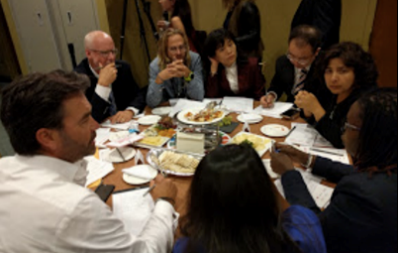
Adding “TQ”, Open Innovation, and other Collaboration Approaches
-
Citizen Science, Crowdsourcing, and Incentive Prizes: The Administration has expanded opportunities for entrepreneurs, researchers, students, teachers, and indeed all American to participate directly in technology development and scientific research. Federal agencies engage in projects such as the FCC Speed Test App that measures the speed and performance of broadband throughout the United States by crowd-sourcing data from volunteers that share information about their handsets and operating systems. Challenge.gov is a listing of challenge and prize competitions, all of which have been run by more than 100 agencies across federal government. These include technical, scientific, ideation, and creative competitions where the U.S. government seeks innovative solutions from the public, bringing the best ideas and talent together to solve mission-centric problems. For more information:
- Challenge.gov: Government Challenges. Your solutions: https://www.challenge.gov
- CitizenScience.gov: Helping federal agencies accelerate innovation through public participation: http://www.citizenscience.gov
-
Open Government Partnership (OGP): OGP was launched in 2011 to provide an international platform for domestic reformers committed to making their governments more open, accountable, and responsive to citizens. Since then, OGP has grown from 8 countries to the 74 participating countries. In all of these countries, government and civil society, including civic tech leaders, are working together to develop and implement ambitious open government reforms. OGP is also expanding to cities and other subnational governments around the world through a 15-city pilot program. The United States is represented in this city pilot by Austin, Texas. For more information:
- Celebrating Five Years of the Open Government Partnership, Now 70 Countries Strong: https://obamawhitehouse.archives.gov/blog/2016/09/20/celebrating-five-years-open-government-partnership-now-70-countries-strong
-
UN Solutions Summit at UNGA: The Solutions Summits have served two main purposes: 1) lifting up exceptional innovations technologists, engineers, scientists and others – who are developing solutions that address one of more of the 17 Sustainable Development Goals (SDGs), and 2) catalyzing a grassroots effort, where communities scout and convene resources around solution-makers. For more information:
- Blog: It takes a Network: https://medium.com/the-white-house/it-takes-a-network-9e7831333906#.hd19roy45
-
Tour of Duty in Government: Individuals of all skillsets currently working in the private sector can be encouraged to take a ‘tour of duty’ to lend their expertise to their city, state, or federal government. To strengthen cross-sector innovation, university faculty and staff can often take advantage of the government tour of duty model to spend some time making a difference in government – some can do this while maintaining their positions back home. In the digital technology area, engineers, designers, data scientists, and product managers can sign up as well. At the federal level over the last 8 years, more than 450 individuals have signed on for a tour of duty to serve in over 25 agencies alongside dedicated civil servants to improve how government delivers modern digital services to the American people. For more information:
- Presidential Innovation Fellowship (PIF) Program: https://obamawhitehouse.archives.gov/innovationfellows
- OSTP Office of the Chief Technology Officer: https://obamawhitehouse.archives.gov/administration/eop/ostp/divisions/cto
- U.S. Digital Service: https://obamawhitehouse.archives.gov/participate/united-states-digital-service
- 18F, of the U.S. General Services Administration (GSA): https://18f.gsa.gov
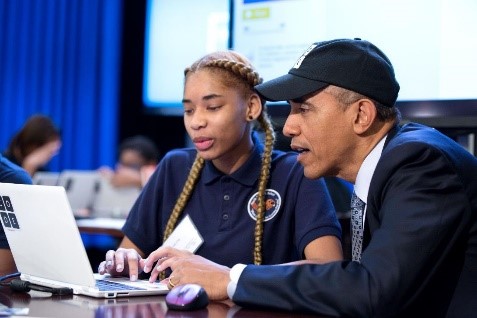
Increasing Access to STEM Education & Jobs
-
TechHire: The President launched the TechHire Initiative in March 2015 to get more people from all backgrounds into the over 600,000 open tech jobs that pay 50 percent more than the average private-sector job. A little over a year after launch, more than 1,500 employers in 70 communities are working with new training programs such as coding boot camps, resulting in thousands of new hires. For more information:
- TechHire webpage: https://obamawhitehouse.archives.gov/issues/technology/techhire
- Fact Sheet on progress with TechHire: https://obamawhitehouse.archives.gov/the-press-office/2016/12/01/fact-sheet-progress-and-momentum-support-techhire-initiative
- White House blogpost on “what’s next” for TechHire: https://obamawhitehouse.archives.gov/blog/2016/12/02/whats-next-techhire
-
Summer Opportunity Project: In February 2016, the White House launched the Summer Opportunity Project to increase the number of young Americans participating in evidence-based, meaningful, and skills-building summer opportunity programs. The Project includes $21 million in Department of Labor Summer Jobs and Beyond grants and the establishment of 16 Summer Impact Hubs that each receive tailored support to enhance jobs, learning, meals, and violence reduction programs for young people this summer, including young people gaining coding experience. Several cities will be hosting “Impact Fridays” – field trip experiences that expose youth to innovation communities in their city. For more information:
- Fact Sheet on the Summer Opportunity Project: https://obamawhitehouse.archives.gov/the-press-office/2016/05/16/fact-sheet-white-house-and-department-labor-announce-21-million-summer
-
Computer Science for All: The Computer Science for All Initiative (CSforAll) has aimed to provide all Pre-K through grade 12 US students with access to high quality computer science education. CSforAll builds on efforts already being led by parents, teachers, school districts, states, and private sector leaders from across the country. More than 500 organizations have made public commitments and actions to support this goal. For more information:
- White House blogpost on CSforAll: https://obamawhitehouse.archives.gov/blog/2016/01/30/computer-science-all
- White House blog for Champions of Change: https://obamawhitehouse.archives.gov/champions/blog
-
STEM for All: The Administration has worked to expand STEM education and employment opportunities to all students. STEM for All emphasizes active learning, which research shows enhance learning and participation for both young people and adults. The Administration has also focused on countering implicit bias, developing positive images of STEM, and convening Federal science and technology agencies to identify steps to mitigate bias in government. For more information:
- STEM for All blog post: https://obamawhitehouse.archives.gov/blog/2016/02/11/stem-all
-
Engaging Youth in STEM – Active Learning, Festivals, Celebrations and more: Active learning strategies are those that engage students in thinking, questioning, and problem solving, all of which lead to deep knowledge retention. Active learning can be practiced with a range of methods from providing quiet time for students to reflect and write about the subject matter to having students complete a scientific research project. All active learning is intended to help students engage with the subject matter and understand how solutions are developed using STEM problem-solving approaches. There is abundant evidence that active learning promotes deep learning, fosters problem-solving skills, and results in better retention of all students in STEM fields.
- Active Learning preK-16: In response to OSTP’s August 2016 call to action, leaders in K-12 and higher education pledged that their organizations, schools, and campuses would take steps to provide more students with high-quality education and sustain the use of active learning throughout STEM education: https://obamawhitehouse.archives.gov/blog/2016/10/25/active-learning-day-america
- White House Science Fairs: https://obamawhitehouse.archives.gov/science-fair
- Overview video: https://www.youtube.com/watch?v=NxEch5nsNkk
- White House Astronomy Night: https://obamawhitehouse.archives.gov/blog/2015/10/15/looking-stars-inspiration-white-house-astronomy-night
- Engaging Youth in STEM leadership, Kid Science Advisors: https://obamawhitehouse.archives.gov/blog/2016/10/20/white-house-hosts-first-ever-meeting-kid-science-advisors
-
My Brother’s Keeper-Council on Women and Girls; STEM + National Week at the Labs: In February 2016, the Administration worked with communities across the country to develop programs that bring STEM and entrepreneurship exposure, internship engagements and more to young people who are underrepresented in the tech sector. For more information:
- Engaging America’s Youth in STEM through Hands-on Experiences in Labs and Communities Across America:https://obamawhitehouse.archives.gov/blog/2016/02/27/engaging-americas-youth-stem-through-hands-experiences-labs-and-communities-across
-
NextGen High Schools: A program that is reinventing the high school experience to better engage students and empower them to seize opportunities in today’s economy, and prepare students for success in college and career. This includes schools that incorporate key elements of redesign like more personalized and active learning, access to real-world and hands-on learning such as “making” experiences, deeper ties to post-secondary institutions, and a focus on expanding STEM opportunities for girls and other groups of students who are underrepresented in these high-growth, well-paying fields. For more information:
- Fact Sheet Announcing More than $375 Million in Support for Next-Generation High Schools: https://obamawhitehouse.archives.gov/the-press-office/2015/11/10/fact-sheet-obama-administration-announces-more-375-million-support-next
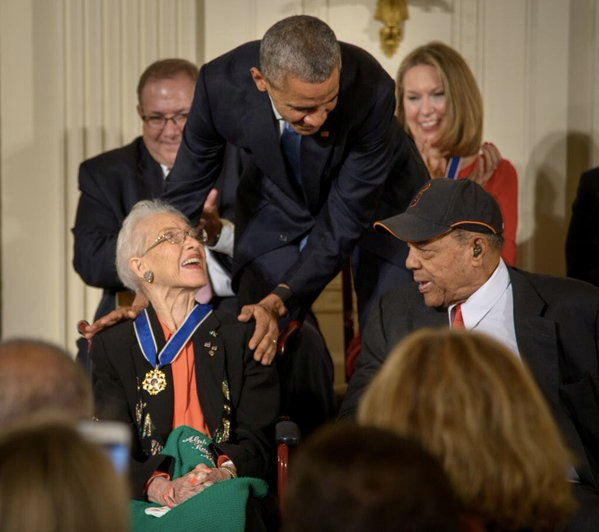
Empowering All Americans to Join the STEM Workforce – Field the Whole Team
-
Tech Inclusion Pledge: In June 2016, over 30 companies joined a new, industry-led Tech Inclusion Pledge. As part of the pledge, companies are committing to take concrete action to make the technology workforce at each of their companies more representative of the American people. Today 79 companies have committed to the pledge, more than 200 universities have committed to building a more diverse student talent pipeline, and over 30 angel investor groups with over $800 million have committed to promoting inclusive entrepreneurship. Some of these actions include: (1) implementing and publishing company-specific goals to recruit, retain, and advance diverse technology talent; (2) annually publishing data and progress metrics on the diversity of our technology workforce; (3) investing in partnerships to build a diverse pipeline of technology talent. For more information:
- The Tech Inclusion Pledge Letter: https://obamawhitehouse.archives.gov/sites/whitehouse.gov/files/images/Blog/Tech-Inclusion-Pledge-Letter-6-22-16.pdf
- White House blogpost on Accelerating American Entrepreneurship: https://obamawhitehouse.archives.gov/blog/2016/11/30/president-obamas-top-ten-actions-accelerate-american-entrepreneurship
-
Reducing Bias in the STEM Workforce: Systemic barriers, such as implicit and explicit bias, present challenges to efforts to draw upon a diverse community in building a STEM workforce for the 21st century. OSTP and the Office of Personnel Management (OPM) established an Interagency Policy Group (IPG) to identify policies and practices to increase diversity in the STEM workforce by reducing the impact of bias, both in the Federal Government and in local Federally-funded institutions of higher education. The IPG inventoried current policies and practices; identified best, promising, and emerging practices; and developed recommendations for Government-wide and agency-specific policies and practices. The IPG then developed an implementation strategy for moving forward. For more information:
- Report: Reducing the Impact of Bias in the STEM Workforce: Strengthening Excellence and Innovation. https://obamawhitehouse.archives.gov/sites/default/files/microsites/ostp/ostp-opm_bias_mitigation_report__20161129.pdf
- Blog: Increasing Diversity in the STEM Workforce by Reducing the Impact of Bias https://obamawhitehouse.archives.gov/blog/2016/12/12/increasing-diversity-stem-workforce-reducing-impact-bias
-
STEM Workforce Diversity, Equity and Inclusion: Through conversations with dozens of Federal agencies, companies, investors, and individuals about their science and technology workforces, we have consistently heard people express a commitment to bringing more diversity, equity, and inclusion to their workplaces. In order to facilitate this, we compiled insights and tips from these conversations and the latest research into an Action Grid designed to be a resource for those striving to create more diverse, equitable, and inclusive science and technology teams and workforces, so that we can all learn from each other.
- Best Minimum Practices: https://obamawhitehouse.archives.gov/blog/2016/11/28/raising-floor-sharing-what-works-workplace-diversity-equity-and-inclusion
- Action Grid for diversity and inclusion: https://obamawhitehouse.archives.gov/sites/whitehouse.gov/files/images/Documents/Diversity%20Equity%20Inclusion%20Action%20Grid.pdf
-
IMAGE of STEM: Inclusion of diverse and compelling STEM images, stories, and positive messages in mainstream entertainment media, social media, and everyday materials can be a positive driver of broad inclusive talent engagement for the STEM workforce. Three areas of action can help: 1) Include diverse STEM role models (past and present). Role models play an important role in shaping the future aspirations of youth and adults alike—they can help students envision themselves as STEM professionals, enhance perception of STEM careers, and boost confidence in studying STEM subjects. Highlight the breadth of STEM careers and societal impacts. 2) Emphasizing social impacts and exciting aspects of STEM work could help inspire students to tackle pressing challenges of the 21st century in the United States and abroad. Stories could also illustrate the range of STEM jobs. 3) Debunking STEM stigmas and misconceptions. STEM is often perceived as boring, too difficult, and “not for everyone.” For more information:
- Image of STEM: What stories in STEM need to be told? https://obamawhitehouse.archives.gov/webform/image-stem-what-stories-stem-need-be-told
- Untold Stories of Women in STEM:
- Presidential Medal of Freedom: https://obamawhitehouse.archives.gov/blog/2016/11/22/celebrating-presidential-medal-freedom-winners-science-and-tech-garwin-hopper-and
- Engagement Events – e.g. NASA: https://open.nasa.gov/blog/nasa-celebrates-women-stem-and-data-science/
- #SeeHer (Advertising & Media Content): https://obamawhitehouse.archives.gov/the-press-office/2016/06/13/fact-sheet-government-businesses-and-organizations-announce-50-million
- Celebrating Hidden and Modern Figures from Four Eras of Space Exploration: https://obamawhitehouse.archives.gov/blog/2016/12/19/celebrating-hidden-and-modern-figures-four-eras-space-exploration
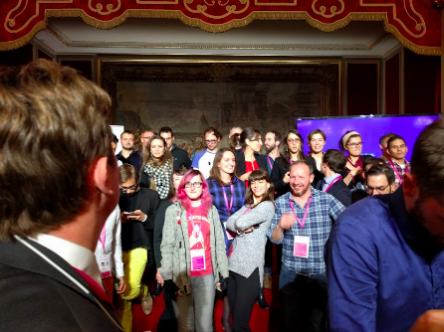
Accelerating Entrepreneurship & Innovation Everywhere, for Everyone
-
Inclusive entrepreneurship: As part of the first-ever White House Demo Day in August 2015, 40 venture-capital firms with more than $100 billion under management committed to help advance opportunities for all Americans, including women and underrepresented minorities, and over a dozen technology companies committed to new actions to ensure diverse recruitment and hiring. For the United States to remain the best place on the planet to start and scale a great company, there are opportunities to make every on-campus incubator and entrepreneurship program as inclusive as possible. For example, more than 200 universities committed to building a more diverse student talent pipeline, and 79 companies committed to the Tech Inclusion Pledge—an effort to make the technology workforce at each of their companies representative of the American public. For more information:
- Fact Sheet on White House Demo Day: https://obamawhitehouse.archives.gov/the-press-office/2015/08/04/fact-sheet-president-obama-announces-new-commitments-investors-companies
- Fact Sheet on the Global Entrepreneurship Summit: https://obamawhitehouse.archives.gov/the-press-office/2016/06/22/fact-sheet-global-entrepreneurship-summit-begins-silicon-valley-new
- Fact Sheet on Accelerating American Entrepreneurship: https://obamawhitehouse.archives.gov/blog/2016/11/30/president-obamas-top-ten-actions-accelerate-american-entrepreneurship
-
Startup in a Day: More than one hundred cities have pledged to build online tools which centralize and streamline the requirements necessary to start a business. Many entrepreneurs have great business ideas but are stifled by redtape, and Startup in a Day has the goal of making it easier for small business owners to get started. For more information:
- Startup in a Day homepage: http://www.sba.gov/startup
- Or e-mail startup@sba.gov
-
Tech Meetups: In April 2015, the White House brought together Tech Meetup organizers from cities and rural communities in over 40 states who are creating coding boot-camps, running shared working spaces, and holding hundreds of innovation-focused tech meetups every day. They are building local talent ecosystems that help Americans access new skills and networks and collaborate on local solutions. For more information:
- Tech Meetup at the White House video: https://obamawhitehouse.archives.gov/photos-and-video/video/2015/04/17/tech-meetup-white-house
-
Nation of Makers: The President hosted the first-ever White House Maker Fair in June 2014 to highlight the growing importance of additive manufacturing (3D printing). The accompanying a call-to-action resulted in commitments to create over 1,000 maker spaces around the country. The third National Week of Making took place on June 17-23, 2016 with events across the U.S. The Maker Movement empowers students and adults to create, innovate, and make their ideas into reality. Responding to President Obama’s call to action, 77 universities and colleges in 32 states representing more than 1.1 million students recently made collective commitments through the higher-ed focused Make Schools Alliance. For more information:
- Nation of Makers homepage: https://obamawhitehouse.archives.gov/nation-of-makers
-
Diversifying Access to Investment Capital: In October and November 2016 nearly 50 investors gathered across three convenings to discuss best practices for creating more access to early stage risk capital for science and technology entrepreneurs from all backgrounds. The gatherings were hosted by the White House and the Department of Commerce’s Office of Innovation and Entrepreneurship. One of the key findings was that pulling together stakeholders from across the entrepreneurial landscape in a given city can catalyze collaboration that helps move the needle on these issues. Over 30 investors influencing over $800M in capital pledged to update their practices to be more inclusive. For more information:
- Demystifying Access to Capital for All Early Stage Science and Tech Entrepreneurs: https://obamawhitehouse.archives.gov/blog/2016/11/30/demystifying-access-capital-all-early-stage-science-and-tech-entrepreneurs
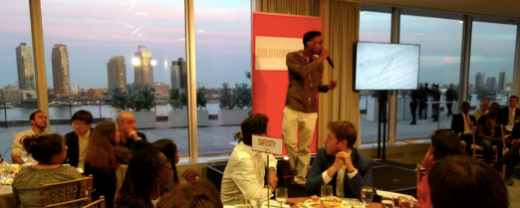
Building Smarter and More Equitable Cities, including Connectivity and Digital Access
-
Smart Cities: Under the Administration’s Smart Cities Initiative, launched in September 2015, localities are leveraging a new generation of sensors and data to help cities meet the needs of their citizens. With more than $350 million in Federal funding and over 70 participating communities, the initiative includes programs like the Department of Transportation’s Smart City Challenge, which awarded Columbus, OH $40 million to pioneer the future of urban transportation. For more information:
- Fact Sheet announcing new investments and participation in the Smart Cities Initiative: https://obamawhitehouse.archives.gov/the-press-office/2016/09/26/fact-sheet-announcing-over-80-million-new-federal-investment-and
- In October, 2016, President Obama hosted the Frontiers Conference in Pittsburg with CMU and University of Pittsburg, with Local as one of the five frontiers tracks: https://obamawhitehouse.archives.gov/blog/2016/08/30/president-obama-host-white-house-frontiers-conference-pittsburgh-pa
-
Manufacturing Innovation Institutes: In June 2016, the Administration launched the ninth Manufacturing Innovation Institute, supported by over $600 million in Federal investment and matched by over $1.2 billion in non-Federal investment—keeping on pace to launch 15 institutes by January 2017. The institutes bridge the gap between applied research and product development by bringing together companies, universities and other academic and training institutions, and Federal agencies to co-invest in key emerging and pre-competitive technology areas that can encourage additional manufacturing investment and production in the United States. For more information:
- Manufacturing.gov: “A National Advanced Manufacturing Portal”: https://www.manufacturing.gov
-
Expanding Broadband Access and Digital Inclusion: ConnectED. Responding to the President’s June 2013 commitment to connect 99 percent of students to high-speed Internet through schools and libraries by 2018, over the last three years, 20 million students have become connected to high-speed Internet, the number of schools lacking high-speed connectivity has been cut in half, and 2,200 superintendents, representing 16 million students, have signed the Future Ready Pledge to transform learning at their schools. In addition, over 5 million students are utilizing $2 billion worth of hardware, software, and mobile broadband resources provided by community organizations and the private sector for ConnectED. For more information:
- ConnectedEd Resources for Schools, Teachers, and Students: https://obamawhitehouse.archives.gov/issues/education/k-12/connected#resources
-
ConnectHome: In July 2015 the Administration began providing home-based Internet access, digital literacy training, and devices to families with school-age children living in HUD-assisted housing in 28 pilot communities. For more information:
- Fact Sheet on the ConnectHome initiative: https://obamawhitehouse.archives.gov/the-press-office/2015/07/15/fact-sheet-connecthome-coming-together-ensure-digital-opportunity-all
-
ConnectALL: The President issued a national call-to-action in March 2016 to connect an additional 20 million Americans to broadband by 2020. Separately, and consistent with that goal, the FCC has created a national broadband subsidy for low-income families by reforming its Lifeline program. For more information:
- Fact Sheet announcing the ConnectAll initiative: https://obamawhitehouse.archives.gov/the-press-office/2016/03/09/fact-sheet-president-obama-announces-connectall-initiative
-
Global Connect: The U.S., in coordination with other countries, multilateral institutions, and stakeholders, is working to actively promote global connectivity through Global Connect Initiative, an effort to prioritize Internet access and connect an additional 1.5 billion people by 2020. As part of Global Connect, the U.S. will also champion Internet policies, including openness, transparency, and rule of law, that can encourage investment and create a strong enabling environment for digital growth to ensure these new connections bear fruit. Any communities across the globe, including in the United States are welcome to participate in the Global Connect community. For more information:
- Global Connect Initiative Homepage: https://obamawhitehouse.archives.gov/the-press-office/2015/07/15/fact-sheet-connecthome-coming-together-ensure-digital-opportunity-all
Additional Innovation Agenda Resources
In 2009, President Obama pledged to “restore science to its rightful place.” In June 2016, the Office of Science and Technology Policy released the STEM 100, a report of 100 examples of the impact the President’s leadership has had in building U.S. capacity in science, technology, and innovation. It also includes several grand challenges and initiatives such as the BRAIN Initiative, Cancer Moonshot, Precision Medicine Initiative, ending the waitlist for organ transplants, Nanotechnology-Inspired Grand Challenge for Future Computing, the Arctic Science Ministerial and more. This link is included here because many of the topics covered would be useful for local community awareness to drive opportunity. For more information: http://go.wh.gov/STEM100
Overall: Useful Tactics for Accelerating Local Innovation
In addition to leveraging or building on any of the above efforts, there are a number of great approaches to use to accelerate what’s working in communities, to bring new skills and perspectives to the table, and to more rapidly surface options. Here are a few approaches that are catalyzing significant and lasting change.
- Scout and Scale: Creative, committed, passionate people are solving challenges in their local communities. We can accelerate progress in more places by scouting to find these creative solutions or solutions-in-progress to tough problems that already exist. To scale, find, and share solutions with others working on the same challenges, use the Internet, and bring teams together.
- Build Communities of Practice: These are peer-to-peer learning and innovation networks that connect colleagues who work on similar challenges to regularly share what works and collaborate. Find ways to post solutions-in-progress, resources and ideas to each other using blogs, short videos, simple websites to share content, social media, list-serves, and have regular meet-ups (in person or online);
- Sprint, Pilot, Catalyze: Learn how to conduct quick discovery sprints, hack-a-thons, workshops --- these are methods that help teams to understand problems faster, create prototypes to more rapidly test alternatives, identify promising directions through fast, lightweight innovations sprints with small cross-functional teams of people exploring creative approaches and rapidly piloting and building together. Critically important: Remember the best practice of “designing with,” which means including those you hope to serve as core members of your innovation teams from the outset and throughout. These methods lower the barriers to entry, encourage experimentation and collaboration, and drastically reduce costs while increasing solution quality.
- Don’t forget to include TQ -- and other ”Qs”: “TQ” stands for technical quotient. Cross-functional teams that include a few experienced technical or digital experts from the start will deliver the best results. We need to make sure tech experts are embedded and on the same teams as local and national civic leadership, non-profits, and others who are developing policy, defining best practices, ensuring better service delivery, and developing solutions to social and civic challenges. Prioritizing inclusion of tech at local police departments, mayor’s offices, school districts, and elsewhere will ensure we unleash all the approaches we have available to us in the 21st Century by leveraging tech and data to make improve lives.
- Engage an Open Ecosystem and Open Data: Use open innovation approaches such as challenge prizes, open data engagement (APIs), and open innovation lab spaces at work, at school, in the community (use libraries and rec centers). These are all tools leaders can use to bring the right people together – often unexpected people can add critical insights. Accelerate innovation by encouraging cross-functional collaborators.
Download "Try This At Home" as a PDF
